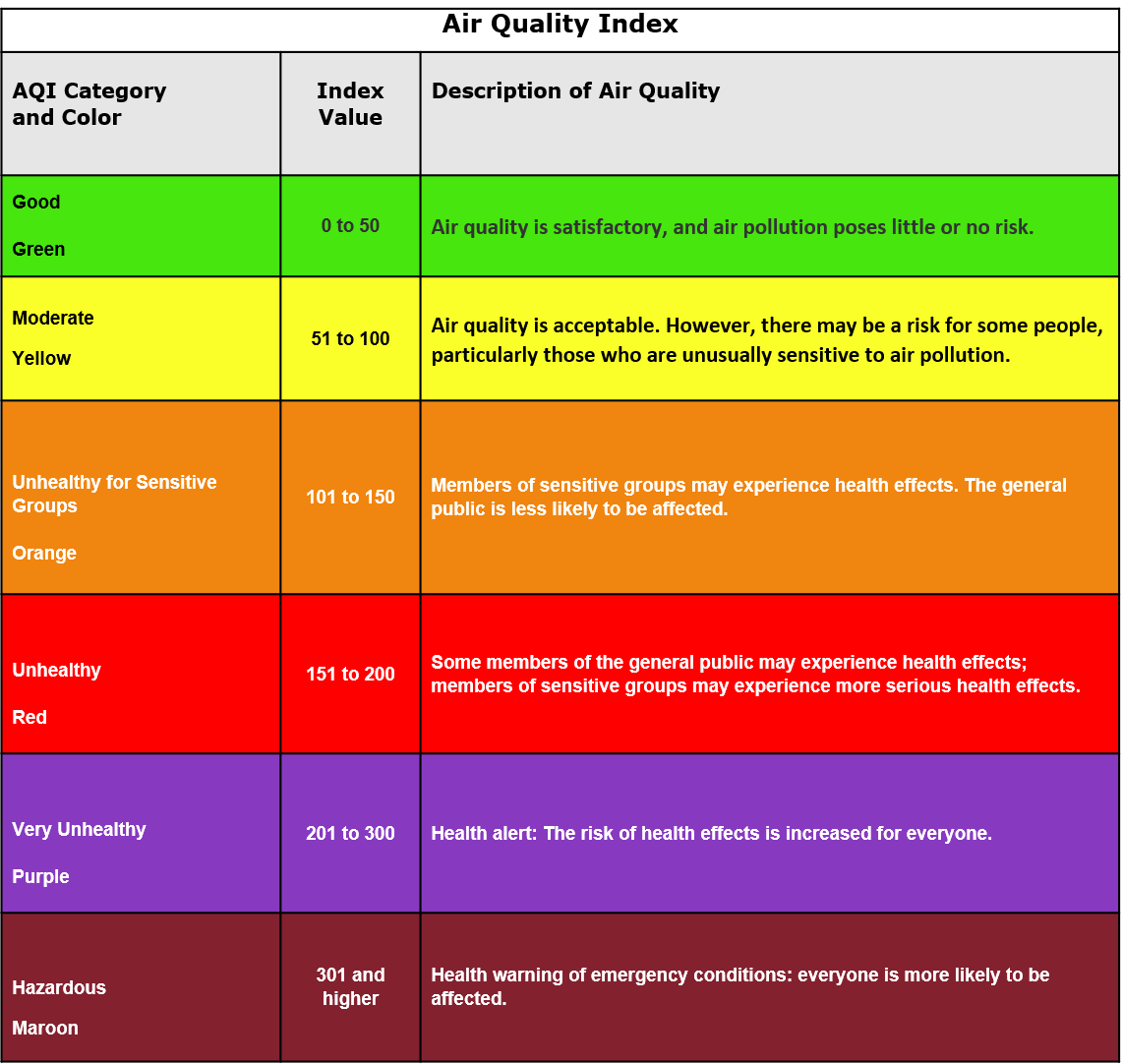Communicating Air Quality Conditions: The Air Quality Index
Air agencies across the U.S. use the AQI to communicate about air quality and health. The AQI is a nationally uniform color-coded index developed by EPA for reporting and forecasting daily air quality. The AQI reports the most common ambient air pollutants that are regulated under the Clean Air Act, including ozone and particle pollution (PM2.5 and PM10 ). The AQI informs the public about air quality in the area, identifies who may be affected and provides steps to take to reduce exposure when pollution levels are unhealthy.
The AQI focuses on health effects that may be experienced within hours or days after exposure to polluted air. It uses a normalized scale to translate the amount (or concentration) of each air pollutant into a more easily understood number: the higher the AQI value, the greater the level of pollution and the greater the health concern (Table 2).
The AQI is divided into six categories that correspond to different levels of health concern. The breakpoints between the categories were selected based on a review of the health effects evidence that is part of the regular review of the National Ambient Air Quality Standards (NAAQS). An AQI value of 100 generally corresponds to the level of the short-term primary (i.e., health-based) NAAQS for the pollutant. For PM2.5 the short-term NAAQS is a 24-h average (daily) standard. AQI values at and below 100 are below the level of the short-term standard and generally considered to be satisfactory. When AQI values are between 101 and 150, air quality is unhealthy for sensitive groups who are at greater risk of health effects. At AQI values greater than 150, both sensitive groups and the general population are at risk for PM2.5-related health effects. Each category has a specific color that makes it easy for people to know when air quality is reaching unhealthy levels in their communities.

